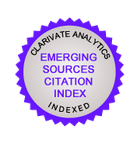Identification methods of defects in potato tubers to automate the process of their sorting
https://doi.org/10.29235/1561-8323-2025-69-2-168-176
Abstract
A method for identifying and separating substandard potato tubers from a common pile based on machine vision and automatic inspection systems is proposed and described. A method based on calculating the color threshold is used for segmenting external defects of potato tubers against the background of a transport conveyor in real time. A centroid tracking algorithm is used to track moving potato tubers. A proprietary dataset consisting of images of commercial and defective potato tubers is created to train the artificial neural network. The results of experimental studies of determining internal defects of potato tubers using nuclear magnetic resonance (NMR) and computed tomography (CT) are presented.
A method of controlled impact on a hard surface is used to create hidden defects in the form of darkening of the tuber pulp. The methodology for conducting experimental studies and the operating parameters of NMR and CT are described. A comparative analysis of images obtained using NMR and CT with natural images of tubers in section was carried out, which made it possible to determine with high accuracy the coincidence of the location of defects detected by a non-invasive method with their real location in the tuber. The work demonstrated the value of NMR and CT for a detailed non-invasive method for determining hidden defects of potato tubers on automatic sorting machines.
About the Authors
V. V. AzarenkoBelarus
Azarenko Vladimir V. – Corresponding Member, D. Sc. (Engineering), Associate Professor, Academic Secretary
66, Nezavisimosti Ave., 220072, Minsk
M. I. Kurylovich
Belarus
Kurylovich Maksim I. – Researcher
1, Knorin Str., 220049, Minsk
V. V. Goldyban
Belarus
Goldyban Viktor V. – Head of the Laboratory
1, Knorin Str., 220049, Minsk
References
1. Noordam J. C., Otten G. W., Timmermans A. J. M., van Zwol B. H. High speed potato grading and quality inspection based on a color vision system. Control Systems, 2017, pp. 15–24.
2. Golmohammadi A., Bejaei F., Behfar H. Design, development and evaluation of an online potato sorting system using machine vision. International Journal of Agriculture and Crop Sciences, 2013, vol. 6, no. 7, pp. 396–402.
3. Caprara C., Martelli R. Image analysis implementation for evaluation of external potato damage. Applied Mathematical Sciences, 2015, vol. 9, no. 81, pp. 4029–4041. https://doi.org/10.12988/ams.2015.52170
4. Tavakoli M., Mohsen N. Application of the image processing technique for sepa-rating sprouted pota-toes in the sorting line. Journal of Applied Environmental and Biological Sciences, 2015, vol. 4, no. 11S, pp. 223–227.
5. Herremans E., Melado-Herreros A., Defraeye T., Verlinden B., Hertog M., Verboven P., Val J., Fernández-Valle M. E., Bongaers E., Estrade P., Wevers M., Barreiro P., Nicolai B. M. Comparison of X-ray CT and MRI of watercore disorder of different apple cultivars. Postharvest Biology and Technology, 2014, vol. 87, pp. 42–50. https://doi.org/10.1016/j.postharvbio.2013.08.008
6. Abrosimov K. N., Fomin D. S., Romanenko K. A., Korost D. V., Gerke K. M. Tomography in soil science: from the first experiments to modern methods (a review). Eurasian Soil Science, 2021, vol. 54, no. 9, pp. 1385–1399. https://doi.org/10.1134/s1064229321090027
7. Petrovic A. M., Siebert J. E., Rieke P. E. Soil bulk density analysis in three dimensions by computed tomographic scanning. Soil Science Society of America Journal, 1982, vol. 46, no. 3, pp. 445–450. https://doi.org/10.2136/sssaj1982.03615995004600030001x
8. Joschko M., Graff O., Muller P.C., Kotzke K., Lindner P., Pretschner D. P., Larink O. A non-destructive method for the morphological assessment of earthworm burrow systems in three dimensions by X-ray computed tomography. Biology and Fertility of Soils, 1991, vol. 11, рр. 88–92. https://doi.org/10.1007/bf00336369
9. Crestana S. Water physics study on soil using computerized tomography (in Portuguese) [Ph. D. Thesis]. Säo Paulo, 1985. 151 p.
10. Hainsworth J. M., Aylmore L. A. G. The use of computed assisted tomography to determine spatial distribution of soil water content. Australian Journal of Soil Research, 1983, vol. 21, no. 4, pp. 435–443. https://doi.org/10.1071/sr9830435
11. Muziri T., Theron K. I., Cantre D., Wang Z., Verboven P., Nicolai B. M., Crouch E. M. Microstructure analysis and detection of mealiness in ‘Forelle’ pear (Pyrus communis L.) by means of X-ray computed tomography. Postharvest Biology and Technology, 2016, vol. 120, pp. 145–156. https://doi.org/10.1016/j.postharvbio.2016.06.006
12. Lammertyn J., Dresselaers T., Van Hecke P., Jancsók P., Wevers M., Nicolaï B. M. MRI and X-ray CT study of spatial distribution of core breakdown in ‘Conference’ pears. Magnetic Resonance Imaging, 2003, vol. 21, no. 7, pp. 805–815. https://doi.org/10.1016/s0730-725x(03)00105-x
13. Cantre D., Herremans E., Verboven P., Ampofo-Asiama J., Nicolaï B. Characterization of the 3-D microstructure of mango (Mangifera indica L. cv. Carabao) during ripening using X-ray computed microtomography. Innovative Food Science and Emerging Technologies, 2014, vol. 24, pp. 28–39. https://doi.org/10.1016/j.ifset.2013.12.008
14. Mendoza F., Verboven P., Tri Ho Q., Kerckhofs G., Wevers M., Nicolaï B. Multifractal properties of pore-size distribution in apple tissue using X-ray imaging. Journal of Food Engineering, 2010, vol. 99, no. 2, pp. 206–215. https://doi.org/10.1016/j.jfoodeng.2010.02.021














































